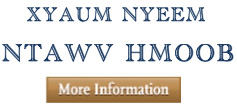History in China
IN THIS SECTION
From Miao to Miaozu — Alterity in the Formation of Modern Ethnic Groups
By Zhiqiang Yang Guizhou University translated by Jie Chen and edited by Louisa Schein
Hmong Studies Journal, Volume 10, 28 Pages
Abstract:
In China, the Miao ethnic group has been known for its long and tragic history. This image, however, was formed only during the modern era. Using a historiographical approach, this paper reviews and analyzes the process through which the Chinese Miao emerged as a modern ethnic group. Specifically, it focuses on the transition from “Miao” as a blanket term for non-Han ethnic groups in southern China during the pre-modern period to “Miaozu” as a modern ethnic group, originally constructed in the context of the emergence of Chinese nationalism at the beginning of the 20th century in the context of the domineering “Other” of Han culture and eventuating in the official recognition of fifty-six “minority nationalities” (shaoshu minzu) in the 1950s. Based on this study, this paper then goes on to a theoretical discussion on the question of alterity in the formation of ethnic groups.
“Miao” During Pre-modern Times
It is generally accepted in academic circles that the earliest historical documentation about the origin of the contemporary Miao – other than the legendary story about San Miao during the antiquity of the Yao Yu period – can be traced back to The Book on Barbarians (Manshu) written by Fan Chuo during the Tang dynasty (618-–907).1 During the Song Dynasty (960-1279), more and clearer documentation of the “Miao” emerged. In his “On San Miao” (San miao ji), Zhu Xi, a preeminent Confucian thinker in the Southern Song dynasty, described the condition of “Miao” and “Miao people” in an area that corresponds to today’s Hunan province. He also made the connection between this group and the “San Miao” tribes during the Yao Shun Yu period (over 4,000 years ago)
There was, however, no mention of “Miao” in the official written history of this period. During the Yuan dynasty (1271-1368), documentation about “Miao” began to appear frequently in the official history. According to existing research, in Yuan History (Yuan shi), the records regarding the names of “Miao” alone include “Miao”, “Miao barbarian” (Miaoman) (such as “Guizhou Miaoman”, “Pingfa miaoman”, “Bafan miaoman”, “Zijiang miaoman”, etc.), “Miaolao”, “Miaoliao”, “Shengmiao”, and so on.3 Judging by their geographical position, the “Miaoman” here referred to mainly the non-Han groups in the area that corresponds to today’s Guizhou and Hunan provinces covering speakers of Tai and Tibeto-Burman and Austroasiatic languages such as the Dong, Buyi, Yao and Yi of today.
READ FULL ARTICLE FROM HMONG STUDIES JOURNAL







